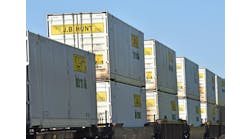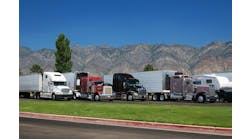Packaging: Fast Way To Improve Customer Satisfaction and Reduce Cost of Fulfillment
Packaging: Fast Way To Improve Customer Satisfaction andReduce Cost of Fulfillment
Take this opportunity to rethink your packaging methodsto improve competitiveness.
by Paul B. Hogan
E-tailers who were ready for this past year’s delugeof holiday orders are reaping the rewards of well-thought-out order fulfillmentprocesses. For those e-businesses that were not as prepared, now is the timefor them to rethink and reengineer their back-end operations with an eye towardfaster delivery, fewer returns, enhanced customer satisfaction and lowerfulfillment costs.
The most commonly overlooked area of fulfillment is thepackaging operation. Many e-commerce companies have reported significantdifficulties associated with packaging. In fact, according to AMR Research,less than 62 percent of all Internet orders were shipped using best practices.The problems include high costs of labor, high shipping costs and high rates ofreturns due to damage. Price Waterhouse Cooper reports that of all the reasonscustomers gave for returning online purchases, 31 percent complained that theproduct was broken or damaged.
According to Forrester Research, lowering the cost offulfillment is listed as the second greatest challenge for e-tailers. Clearly,instituting a packaging process that reduces postage, enhances the image andprotects the company’s product should receive significant attention fromcost-conscious managers. If the packaging process also saves time, reducespackaging inventories and requires less space and labor, then the rewards areall too obvious. For e-tailers and direct catalog companies, packaging has amajor effect on perception, productivity and protection.
Customer’s perception
E-commerce companies often overlook the impact of poorlydesigned and messy packaging on the customer’s first impression of thequality of their products. A study of 60 e-tailers by Electron Economy foundthat “packaging speaks to overall quality well before packages areopen.” Packages that protect the contents from shifting and breakage andcontain packaging material that is easy to dispose of is an important marketingadvantage. Equally important, the packaging material must be easy to reuse tofacilitate returns.
3M’s Packaging Systems Division ran a series of focusgroups on how Internet consumers viewed the packages they were receiving. Themost surprising insight was just how savvy consumers were about the shippingprocess and their strong opinion that the shipping container be close to thesize of the product inside. A real irritation was getting a small productplaced in too large a box, surrounded by “peanuts” or otherfillers, such as shredded paper. “Peanuts” came up again and againas the biggest gripe of all groups. It is clear that the consumer seespackaging as part of the total brand image the Internet retailers or catalogmarketers project.
Productivity and labor savings
Perhaps the most important and cost-efficient change adistribution center can implement is to significantly improve the speed ofmaterial flow once the goods have reached the packaging area. The solutiondepends upon the volume of goods, which dictates the need for de-centralizedpacking stations or a totally integrated packaging line.
The volume requirements of a packaging operation mustaccommodate “peak periods,” much like front-end order entry. Mostdistribution centers that package over 500 orders per day use a centralized,on-line packaging process to maximize productivity and minimize the number ofpackers. Package volume and protection requirements determine the type ofpackaging material and dispensing methods needed.
It is critical to on-time delivery commitments that thepackaging area does not become a bottleneck. A well-thought-out packaging linecan handle 10 to 12 packages per minute. Additional packers and/or systems canbe added to the same line for peak periods.
For smaller volume, or customized pre-pack operations, thepackaging station or off-line concept works well. In this operation, individualpackaging stations receive the products and paperwork in a tote, and the packeris responsible for all aspects of completing an order, including final qualitychecks. The advantage of decentralized order fulfillment is that it involveslower capital costs and no systems integration. The disadvantage is reducedproductivity compared to a centralized packaging line.
Expert help in designing a packaging line is available bycontacting a packaging material manufacturer, such as Sealed Air Corporation.Packaging manufacturers work closely with other complementary companies, suchas 3M, and the local distributor who can provide integrated solutions. It isimportant that the vendor provide line design and handle ongoing servicerequirements. For setting up a new fulfillment operation, companies such asKeyonesource.com provide complete engineering support and a turnkey operation.
Key to product protection, lower costs
Recent cost increases by the major package carriers havemade it imperative to use the lightest material that can protect a product inthe smallest possible box, or a mailer bag. Cost-conscious managers ofe-tailers and other direct sales companies are aware of the impact on thebottom line of shaving a few ounces from each package.
The most frequently used packaging material for fulfillmentcenters include air cellular cushioning (bubble), inflatable void fill,foam-in-place packaging, converted paper and suspension packaging. For small,low profile items, protective mailer bags, such as Jiffy Mailer products, areideal because they eliminate a carton, reduce labor and lessen postage cost.
For off-line packaging, typical product brands includeBubble Wrap cushioning, Rapid Fill inflatables and Korrvu suspension packs asthey present a neat, positive image to the customer. Instapak foam-in-place orFill Air inflatable packaging systems are often used for high-speed,centralized packaging lines, in combination with an in-line carton sealer andother auxiliary equipment and weighing systems.
Jupiter Communications recently reported that 27 percent ofe-tailers spend more than 10 percent of revenues on fulfillment. Typically,over half the cost of fulfillment is tied up in packaging the product forshipment and the associated costs directly linked to packaging — such aslabor, shipping container size and postage. If a better way to package, protectand ship items can reduce labor, space and packaging inventories, and makeconsumers happier when they open their ordered products, then it is time toseriously reconsider the process by which e-commerce companies fulfill customerorders. MHM
About the Author
Paul B. Hogan has spent 33 years in the packagingindustry, and he is currently a consultant for Sealed Air Corporation. His pastexperience includes positions in general management, marketing and sales. Hismost recent role was vice president sales for Sealed Air. He is now focusing onthe dynamics and influence of packaging for e-commerce/fulfillment operations.For more information, contact Paul Hogan at [email protected] or phone (201)712-7131.


